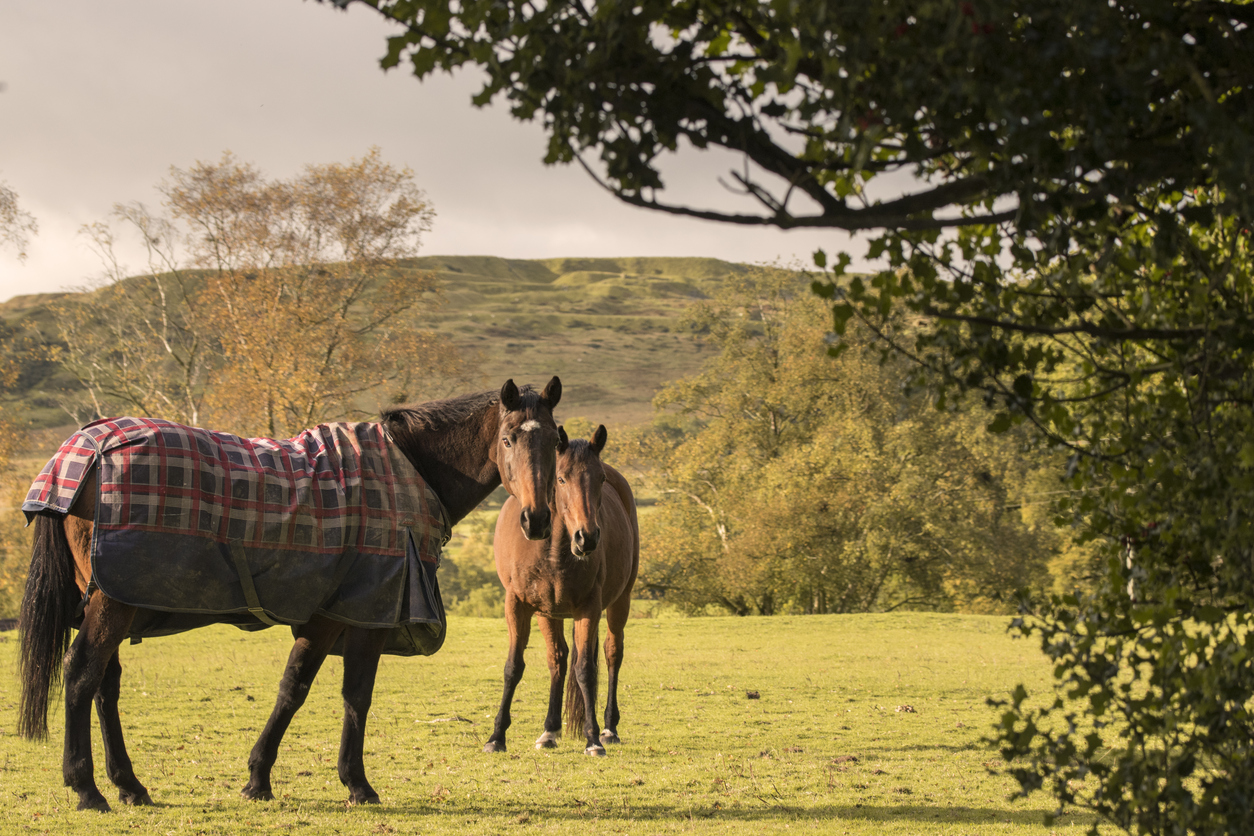Posted: 7th October 2019 | Back to news feed

As winter approaches horse owners in UK will be digging out rugs ready to keep their charges warm as temperatures drop. At the same time, those changes in day length will have triggered the horse’s body to start growing a longer, thicker coat with more oil to help keep it warm and dry in cold and wet weather. Horses have a remarkably wide thermoneutral zone, which is the breadth of temperatures in which they will feel comfortable. While their core temperature is 38°C, it’s only when air temperatures exceed 25°C or drop below 0°C that they will experience physical discomfort.

Horses can tolerate a wider range of temperature than humans can thanks to thermoregulation, which is the physical and anatomical processes that help them maintain their body temperature. These include the lifting of their coat using pile erector muscles to trap warm air next to the skin and the generation of heat from digesting feed, in particularly the long stems in forage. Given that horses have evolved to trickle feed for 17 hours a day, the heat from forage is incredibly important to keep them warm in winter.
If a horse does get cold, their body will divert blood flow to their internal organs, meaning extremities such as their ears might feel cold to touch. That’s normal for a horse in winter and doesn’t mean that they need to wear extra rugs. If you want to find out how warm a horse is, place a hand in their ‘armpit’ or behind their withers. It should go without saying that if they are sweaty, they need fewer rugs!
If horses have evolved to stay comfortable in everything bar extreme weather conditions, why do we rug horses as soon as there’s a nip in the air when they are turned out in the morning? We anthropomorphise horses and love seeing them wrapped in rugs when we’re feeling cold, but over-rugging has a negative impact on them. Rugging too early will inhibit the growth of a protective winter coat and may stop the pile erector muscles from functioning properly. Excess energy from food that doesn’t get used heating or for movement will be laid down as fat. Horses have evolved to lose condition during winter so that they are less susceptible to conditions caused by getting fat on the richer grass in spring, therefore heading out of winter overweight isn’t ideal.
If you can, minimise the rugs you use this winter and feed ad lib forage instead. It’s a great way to combat vices, stave off stomach ulcers and keep horses warm naturally. There’s just one thing to note if you do feed more forage this winter. Even good quality hay can contain dust, bacteria and spores which trigger respiratory disease in horses, so it’s important to manage exposure to them. Recent research found 88% of the horses examined were suffering from inflammatory airway disease (IAD), even though many showed no outward sign. Steaming hay with a Haygain Steamer reduces the risk of a horse developing an IAD by 66% and has the added benefit of making hay far more palatable for horses.
Take a closer look at the Haygain Steamer and the huge range of benefits for horses of steaming hay here: https://haygain.co.uk/pages/benefits-of-hay-steaming-1
The Equestrian Index newsfeed is compiled from articles submitted by advertising members and expresses the opinions of those members. Watsons Directories Ltd shall not be held liable for any inaccuracies or mis-statements therein.